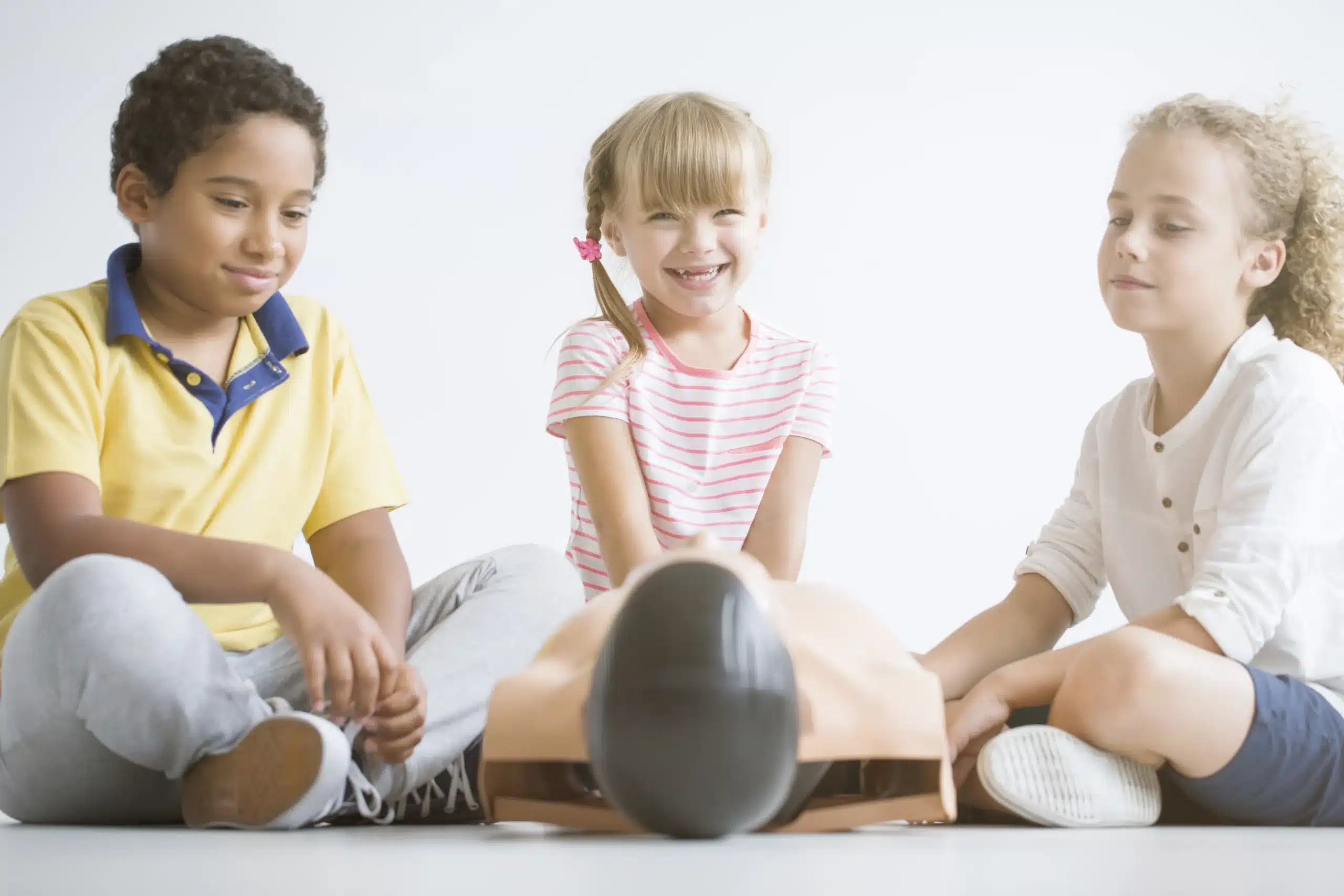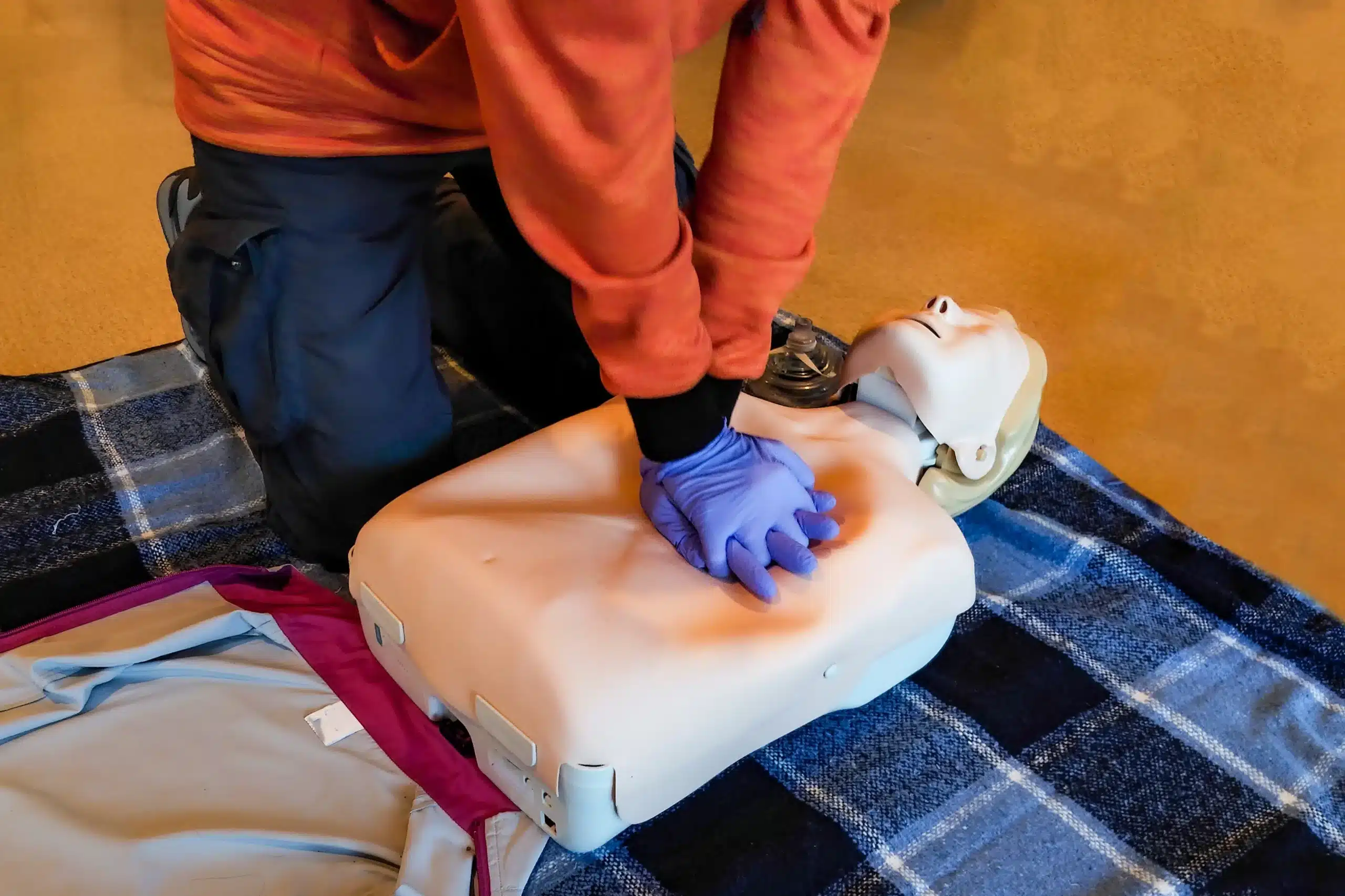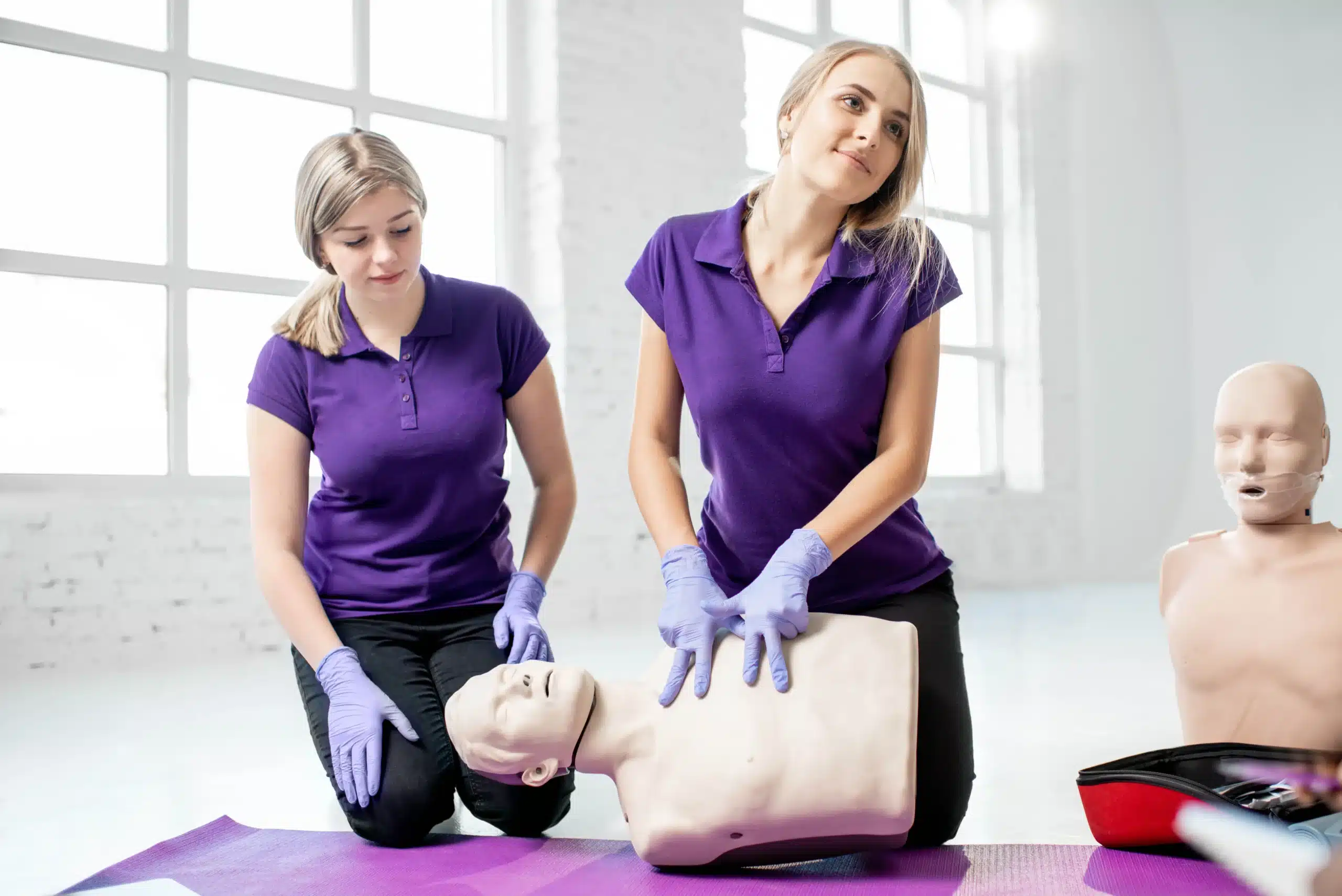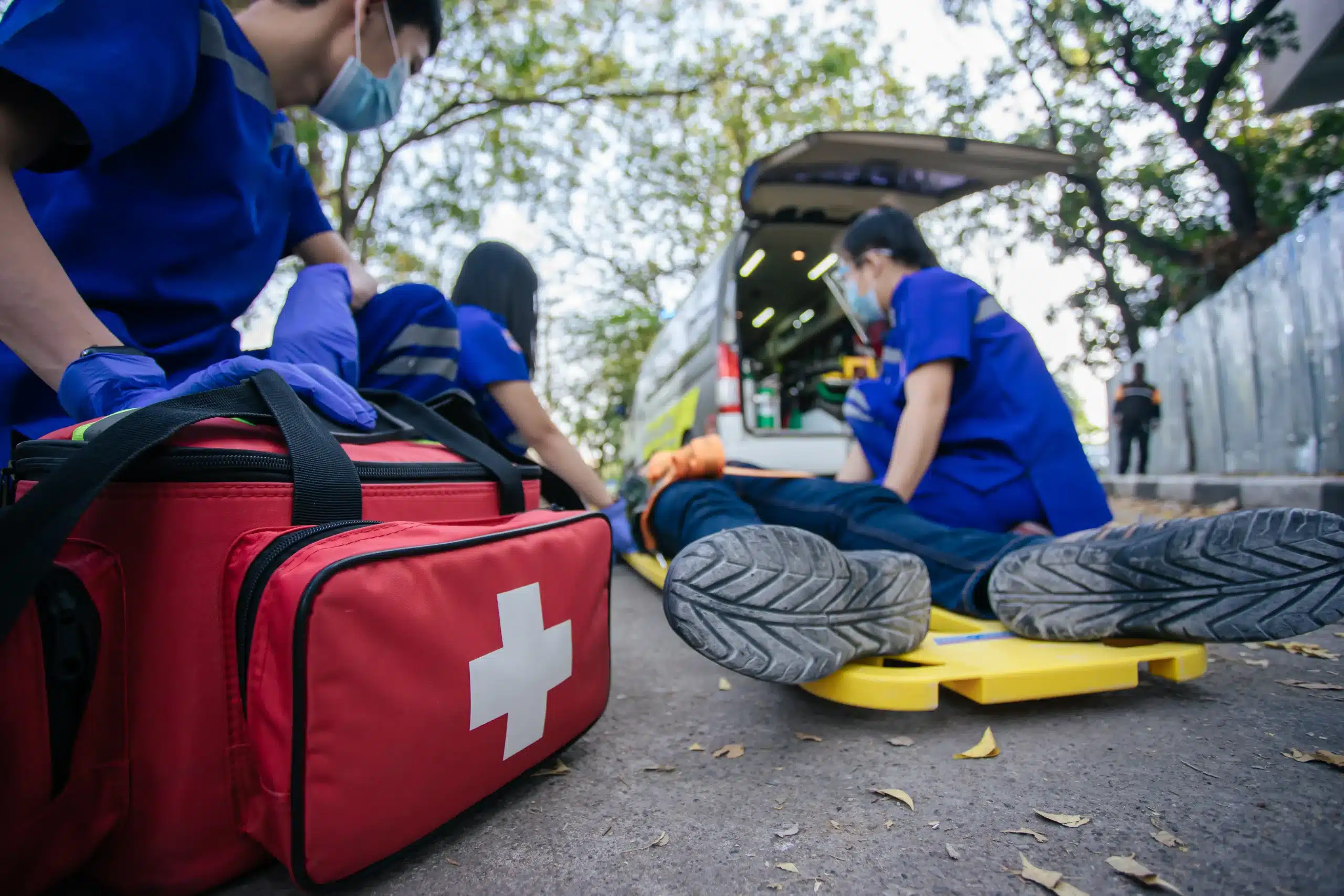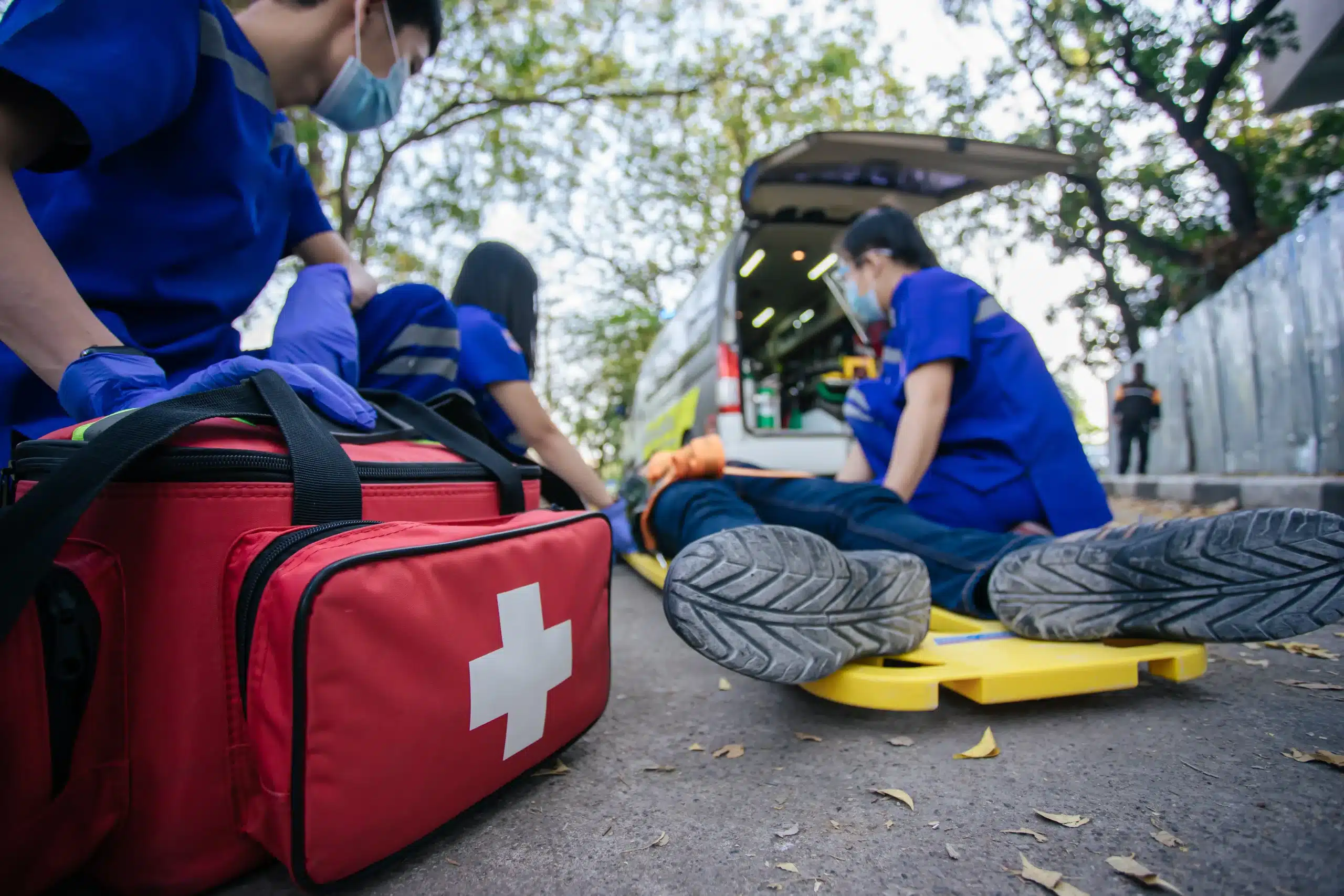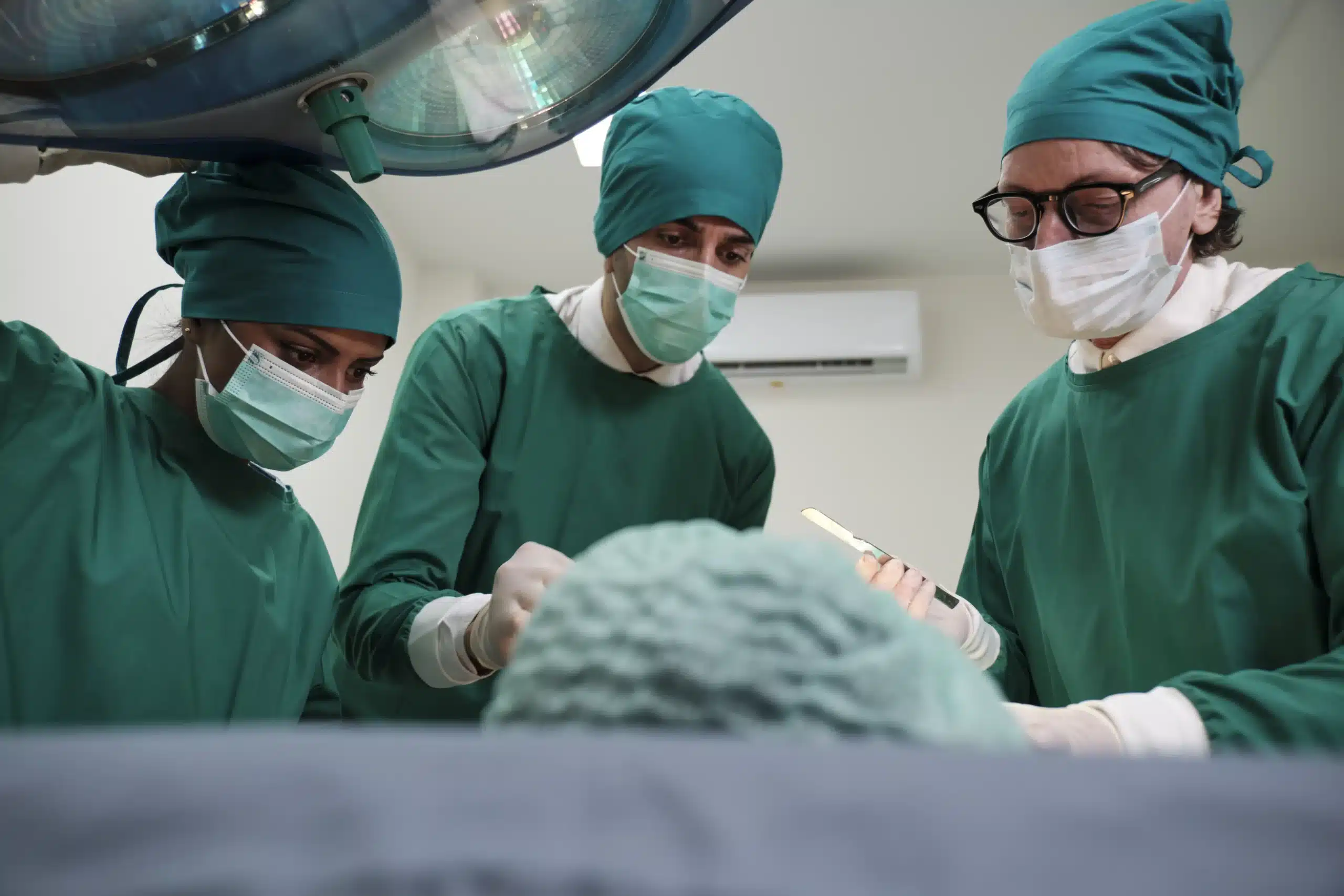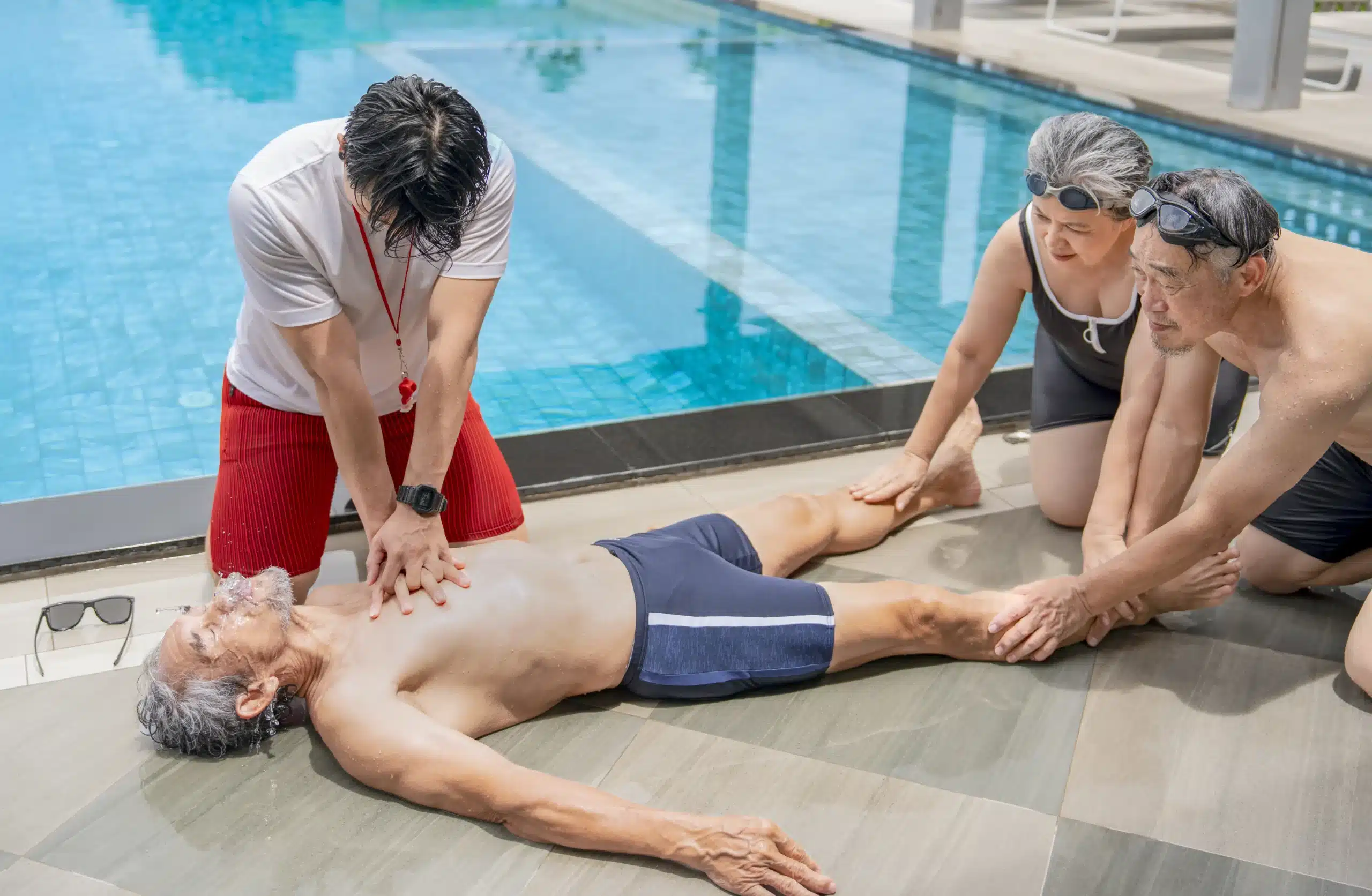Accidents happen, especially with children. Being prepared is key to ensuring their safety and well-being. Pediatric CPR and first-aid in San Jose provides parents, caregivers, and childcare providers with the essential skills to respond effectively in emergencies. This training covers a wide range of topics, from recognizing the signs of a medical emergency to administering CPR and providing basic first aid. In this post, we’ll explore the importance of pediatric CPR and first aid, discuss where to find reputable training providers in San Jose, and outline what you can expect to learn in a typical course. We’ll also touch on the certification process, recertification requirements, and the various course formats available to fit your busy schedule.
Key Takeaways
- Pediatric CPR and First Aid training gives you the skills to handle emergencies involving children. Find a reputable provider and choose a course that fits your needs and schedule.
- Knowing how to respond in a crisis can significantly impact a child’s outcome. Pediatric training covers essential techniques adapted for infants and children, including CPR, choking rescue, and first aid.
- Regularly reviewing resources and taking refresher courses helps you stay up-to-date and prepared. This ensures you can always provide effective care when it matters most.
What is Pediatric CPR and First Aid in San Jose?
Pediatric CPR and First Aid training in San Jose gives parents, caregivers, and childcare providers the skills they need to handle emergencies involving children. These courses cover a range of life-saving techniques, from CPR and rescue breathing to treating common childhood injuries like cuts, burns, and allergic reactions. Knowing how to respond quickly and effectively can make all the difference. Many classes offered in San Jose follow American Red Cross guidelines and meet OSHA requirements, ensuring you receive high-quality instruction. At Santa Clara CPR Classes, we offer comprehensive Pediatric First Aid, CPR, and AED training designed to empower you with confidence and practical skills.
Why Pediatric Training Matters
As a parent or caregiver, you’re responsible for a child’s safety and well-being. Emergencies can happen anytime, and knowing pediatric CPR allows you to respond immediately. Seconds count in a crisis, and your ability to provide immediate care can significantly impact a child’s outcome. Beyond the practical skills, this training builds confidence, empowering you to act decisively when it matters most. It’s not just about learning the techniques; it’s about developing the assurance to use them effectively under pressure. Learn more about our CPR training options.
Common Pediatric CPR & First Aid Misconceptions
Unfortunately, several misconceptions surround pediatric CPR and First Aid. Some people believe that CPR is only for medical professionals or that giving rescue breaths is always necessary. Others might think that a child will automatically start breathing again after receiving CPR. These misunderstandings can prevent people from taking action in an emergency. Our CPR and First Aid courses address these myths head-on, providing clear information and hands-on practice to build your skills and confidence. We believe that dispelling these myths is crucial for empowering everyone to act quickly and effectively in a crisis. Check out our low price guarantee.
Top Pediatric CPR & First Aid Training Providers
Finding the right pediatric CPR and first aid training can feel overwhelming. To simplify your search, I’ve compiled a list of reputable training providers in the San Jose area. Remember, the best course for you will align with your specific needs and schedule.
Santa Clara CPR Classes
Santa Clara CPR Classes offers a variety of American Heart Association (AHA) certified courses, including BLS, ACLS, PALS, and First Aid. Their focus on convenient schedules and a low price guarantee makes them a popular choice for CPR certification in Santa Clara, Milpitas, and San Jose. Visit their website for a complete list of courses.
American Red Cross
The American Red Cross is a well-known provider of CPR and first aid training. Their San Jose location offers a range of courses, including pediatric first aid and CPR training, making them a good option for parents, caregivers, and childcare providers. They offer both in-person classes and blended learning options.
Safety Training Seminars
Safety Training Seminars provides a comprehensive selection of AHA-certified courses, including BLS, ACLS, PALS, and First Aid. They also offer convenient renewal options like the RQI program, which is especially helpful for healthcare providers. Learn more about their offerings on their website.
Local Hospitals & Community Centers
Local hospitals and community centers frequently offer CPR and first aid training courses. For example, the Santa Clara County Fire Department (SCCFD) provides AHA Heartsaver CPR/AED training and Hands-Only CPR/AED training. Check with your local hospital or community center for information on available programs. These can be a great resource for affordable training options.
American Heart Association (AHA) Courses
While the AHA doesn’t directly teach courses, they set the standards for CPR and first aid training. Many organizations, like Santa Clara CPR Classes and Safety Training Seminars, are certified AHA Training Centers. Choosing an AHA-certified course ensures you’re receiving high-quality, up-to-date instruction. Find a local training center on the AHA website.
San Jose City College
San Jose City College offers a variety of health and safety courses, including CPR and first aid training. These courses aim to equip students with essential life-saving skills. Visit their website or contact the college directly for specific course information.
Find Convenient Course Formats & Schedules
Finding the right CPR and first aid course often comes down to format and scheduling. Luckily, there are several options available in San Jose to fit your needs and learning style. Let’s take a look at the most common types: in-person, online, and blended learning.
In-Person Training
In-person classes provide hands-on learning and direct interaction with a certified instructor. This format allows you to ask questions, practice your skills with feedback, and build confidence in a group setting. The American Red Cross offers various in-person CPR and first aid training courses in San Jose, including options specifically designed for parents, caregivers, and childcare providers. This face-to-face training is invaluable for mastering these essential lifesaving techniques.
Online Courses
Online courses offer flexibility and convenience, allowing you to learn at your own pace and on your own schedule. They’re a great option if you have a busy lifestyle or limited access to in-person classes. Many providers, like All CPR San Jose, offer a range of online courses tailored to different needs and budgets—from healthcare providers seeking BLS certification to parents wanting to learn pediatric CPR. Be sure to choose a reputable provider that offers high-quality online instruction and meets all certification requirements.
Blended Learning
Blended learning combines online instruction with in-person skills practice. You’ll complete the coursework online at your convenience, then attend a shorter, hands-on session with an instructor to demonstrate your skills and receive personalized feedback. This format is ideal if you want the flexibility of online learning but still value the hands-on experience. Providers like CPR Training Center offer blended learning options for certifications like Heartsaver Pediatric First Aid CPR AED, allowing you to learn efficiently and effectively.
What Will You Learn?
Pediatric CPR and first aid classes cover a range of skills to equip you for emergencies involving infants and children. These courses blend theoretical knowledge with practical exercises, ensuring you feel confident and prepared to respond effectively.
Essential CPR Techniques
You’ll learn how to recognize the signs of a cardiac or breathing emergency in an infant or child. The course covers CPR techniques adapted for different age groups, from newborns to adolescents. This includes chest compressions, rescue breaths, and how to determine the correct compression depth and rate for each age. For convenient local training, check out these CPR classes in Santa Clara.
Pediatric First Aid Basics
Pediatric first aid goes beyond CPR. You’ll gain practical skills to handle common childhood injuries like cuts, burns, and fractures. Training also covers how to manage allergic reactions, fever, and other medical emergencies specific to children. Learn more about the importance of pediatric first aid and CPR training.
Choking & AED Use
This section focuses on how to recognize and respond to choking in infants and children. You’ll learn techniques to dislodge an obstruction and restore airflow. The course also covers the safe and effective use of an automated external defibrillator (AED) on a child. This article explains the differences between infant, child, and adult CPR.
Emergency Response
Beyond specific techniques, you’ll learn how to assess an emergency situation calmly and efficiently. Training emphasizes the importance of quick thinking, prioritizing actions, and calling for professional help when needed. This piece on CPR training for parents and caregivers offers valuable insights.
Hands-On Practice
These courses aren’t just lectures. You’ll get plenty of hands-on practice with mannequins and other training equipment. This allows you to build muscle memory and develop the confidence to perform CPR and first aid effectively under pressure. Find a comprehensive guide to Santa Clara CPR classes for more information.
Emotional Support for Children
A key aspect of pediatric first aid is understanding the emotional impact of emergencies on children. You’ll learn techniques to provide comfort, reassurance, and emotional support to a child during a stressful situation, minimizing their anxiety and promoting a sense of safety. This blog post discusses the importance of pediatric first aid.
Costs, Certification, & Recertification
Knowing the costs, certification process, and recertification requirements upfront helps you choose the right Pediatric CPR and First Aid course. Let’s break down what you can expect.
Average Course Prices
CPR and First Aid course prices vary based on several factors. These include the course type (CPR only, CPR/AED, or a combined CPR/First Aid/AED course), the training provider (American Red Cross, AHA-authorized training centers like Santa Clara CPR Classes, or independent instructors), and whether you choose in-person or online learning. Specialized courses, such as those combining First Aid and Pediatric CPR, might cost a bit more, especially if they include AED training. Contacting a few different providers, including Santa Clara CPR Classes, to compare pricing is always a smart move. This way, you can find the best value for your needs.
Discounts & Offers
Many training providers offer discounts. These might be for groups, students, or people taking the course again. Some organizations, like Safety Training Seminars, which offer various AHA-certified courses, may have special offers or package deals. Check if your employer offers CPR training or if they partner with any training centers for discounted rates. And remember, it never hurts to ask about potential discounts when you contact a provider!
Certification Requirements
Certification requirements are generally standardized across nationally recognized organizations like the American Heart Association and the American Red Cross. You’ll need to successfully complete the course, including a written exam and a skills demonstration, to earn your certification. For example, the Red Cross provides a two-year certification in Adult and Pediatric CPR/AED after successful completion. This digital certificate is accessible at any time and includes a unique ID and QR code for easy verification. Clarify the specific certification requirements with your chosen provider before you register.
Recertification
CPR and First Aid certifications are typically valid for two years. Recertification involves taking a renewal course to refresh your skills and stay current. Some providers offer streamlined recertification courses or specialized programs like the RQI program for healthcare providers. Understanding the recertification process and planning ahead ensures you maintain your life-saving skills. Santa Clara CPR Classes offers various renewal courses for certifications like BLS, ACLS, and PALS, making it easy to stay certified.
Choose the Right Course
Picking the right pediatric CPR and first aid course is a big decision. It’s about more than just ticking a box; it’s about gaining the confidence and skills to potentially save a child’s life. Here’s how to find the perfect fit:
Assess Your Needs
Before you start browsing courses, think about why you’re taking this training. Are you a parent wanting to be prepared for emergencies at home? A childcare provider needing certification for your job? Or a medical professional seeking to enhance your skills? Understanding your specific needs—like working with infants, toddlers, or older children—will help you narrow down the options. As the experts at ChildcareEd explain, understanding the specific needs of children in emergencies is crucial for an effective response.
Evaluate Providers
Not all CPR and first aid courses are created equal. Look for reputable providers with a strong track record. Check if they offer American Heart Association (AHA) certified courses, which are widely recognized and respected. Consider factors like class size, instructor qualifications, and the overall learning environment. Do they offer flexible scheduling and convenient locations? Reading reviews and testimonials can also offer valuable insights. For those in the Santa Clara, Milpitas, and San Jose area, Santa Clara CPR Classes is known for its comprehensive programs and commitment to student success.
Compare Courses
Once you’ve identified a few potential providers, take a closer look at the courses themselves. What topics are covered? How long is the training? Does it include hands-on practice and real-life scenarios? Some courses focus solely on CPR, while others combine it with first aid training. Make sure the course content aligns with your needs and the requirements of your profession (if applicable).
Instructor Experience
The instructor’s experience and expertise play a crucial role in your learning experience. Look for instructors who are not only certified but also passionate about teaching and have a knack for explaining complex concepts clearly. A knowledgeable and engaging instructor can make all the difference in your confidence and ability to apply what you’ve learned. Safety Training Seminars, for instance, is known for its experienced instructors who provide high-quality training. Don’t hesitate to ask about an instructor’s background and teaching style before signing up for a course.
Prepare for Your Training
Getting ready for your pediatric CPR and first aid training? Fantastic! Knowing what to expect and how to prepare can make your learning experience even better. This section covers everything from pre-class prep to staying up-to-date on the latest guidelines.
What to Expect
Pediatric CPR and first aid training equips you with the skills to respond confidently in emergencies involving infants and children. Expect a combination of interactive discussions, demonstrations, and hands-on practice. You’ll learn to assess a situation, perform CPR, provide first aid for common childhood injuries, and use an AED. Many classes, like those at Santa Clara CPR Classes, offer flexible schedules with in-person and blended learning options.
Tips for Parents & Caregivers
This training is especially valuable for parents and caregivers. It empowers you to act quickly and effectively when a child’s safety is at risk. Come prepared to ask questions and actively participate in scenarios. The goal is to build your confidence and equip you with the skills to potentially save a life. CPR training transforms potential tragedies into opportunities for rescue.
Create a Safe Environment
Pediatric first aid training is crucial for creating safe environments for children. By learning to identify and respond to potential hazards, you’ll be better prepared to prevent accidents and injuries. Think about your own home and childcare setting. What potential dangers exist, and how can you minimize them? This proactive approach, combined with your first aid skills, will significantly contribute to a safer environment. Pediatric first aid training offers parents and childcare providers peace of mind.
Stay Current on Guidelines
Guidelines for CPR and first aid are regularly updated. Staying current with these guidelines is essential for providing effective care. After your initial training, consider scheduling refresher courses to maintain your skills and knowledge. This ongoing commitment ensures you’re always prepared to handle any emergency.
Community Resources & Support
Look for community resources that offer ongoing support and guidance. Local organizations, hospitals, and community centers often provide refresher courses and workshops. Santa Clara CPR Classes offers a variety of AHA-certified courses and a low price guarantee. Connecting with other parents and caregivers who have completed similar training can also create a valuable support network.
Related Articles
- Your Guide to First Aid Training in San Jose – Santa Clara CPR Classes
- Pediatric Advanced Life Support (PALS) Courses in Milpitas – Santa Clara CPR Classes
- CPR Certification in San Jose: A Complete Guide
- CPR Renewal in San Jose: Your Complete Guide – Santa Clara CPR Classes
Frequently Asked Questions
What if I’m already CPR certified but need to renew my certification? Renewal courses are readily available and often shorter than initial certification courses. Many providers offer streamlined recertification options, so check with organizations like Santa Clara CPR Classes or the American Red Cross. They can guide you through the recertification process and help you find a course that fits your schedule.
Is online CPR training as effective as in-person training? While online courses offer flexibility, in-person training provides hands-on practice and direct feedback from an instructor. This can be especially helpful for mastering CPR techniques. Blended learning, which combines online coursework with in-person skills sessions, offers a good balance. Consider your learning style and comfort level when deciding which format is best for you.
How often do I need to renew my pediatric CPR and first aid certification? CPR and first aid certifications are typically valid for two years. Staying current with the latest guidelines is essential, so plan to recertify before your current certification expires. Many training providers offer recertification courses, making it easy to maintain your skills and qualifications.
What’s the difference between CPR for adults and CPR for children? CPR techniques differ slightly for adults, children, and infants. Pediatric CPR courses teach you the correct compression depth, rate, and techniques for each age group. These courses also cover how to recognize the signs of a cardiac or breathing emergency in a child, which can be different than in adults.
How can I find a reputable CPR and first aid training provider in my area? Start by searching online for providers near you. Look for organizations offering American Heart Association (AHA) certified courses, as these meet nationally recognized standards. Check reviews and testimonials to get a sense of the quality of instruction and student experience. Don’t hesitate to contact providers directly to ask about their instructors’ experience, class sizes, and course content.
